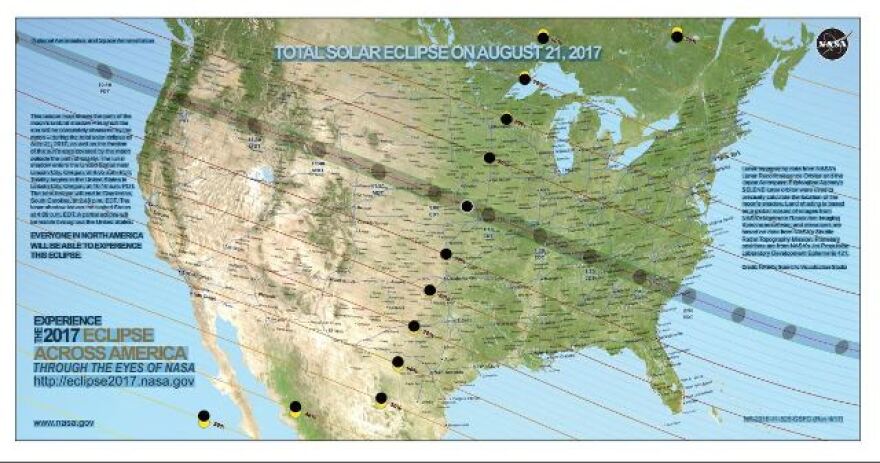About two weeks from now on August 21, a lot of people will be looking up. They will be witnessing the first "coast to coast" solar eclipse visible in the United States in about 100 years.
You can use this interactive map from NASA to find exactly when to look for the effects of the eclipse in your part of the world. And if you need help converting UTC or (UT) time, check here.
Howard Hochhalter manages the Bishop Planetarium at the South Florida Museum in Bradenton. He says in Florida, we'll get about 83 to 85 percent of the eclipse.
It's an event Hochhalter says has been deeply affecting in history -- the kind of thing known to start and end wars. But, of course, each person will respond in their own way.
To people in Florida, he says, it will look like a fingernail clipping in the sky, with the moon blocking most of the sun.
"We will get dark skies enough to be able to see Venus and Jupiter in the sky, and probably the brightest star in the sky, Sirius, which is right now up in the sky, but we can't see it because of the light of the sun, but we'll likely be able to see those three things," Hochhalter said.
Hochhalter says if we're lucky, it won't rain on the day of the solar eclipse. So at about 2:50 p.m., we'll have the opportunity to check out the full effects of the celestial event.
And he says make sure you protect your eyes with the proper solar-filtering glasses, telescopes or other filters. There have been reports of people selling bogus glasses to cash in on this "once-in-a-lifetime" event.
"The fake solar glasses will look exactly like the real ones, just like a fake Louis Vuitton bag will look like a real one, and you don't have the scientific equipment at home to test the filters to make sure they'd actually be effective in blocking the sun's light," Hochhalter said.
You can find a list of reputable dealers for eclipse eye protection at The American Astronomical Society's website, aas.org.
If you want to take a picture of the eclipse with your phone, here are some tips.
The folks at NASA are on top of the solar eclipse, as you might imagine.
They're tracking the event and encouraging citizen scientists to help answer questions about what happens when the light of the sun is blocked, even for a short time.
You can join in by getting the globe observer app. Active data collection begins on August 18.
Finally, you can live stream the eclipse with video from NASA. The space agency also has this list of viewing events for the eclipse.




